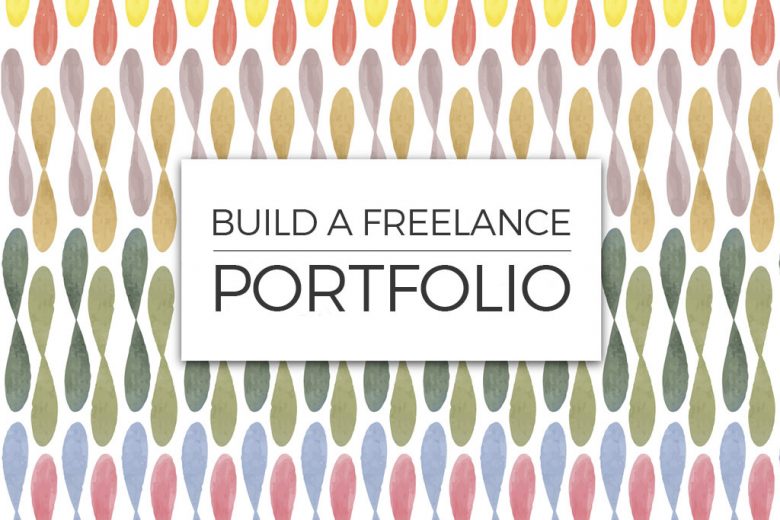Five tips to build a freelance portfolio that will get you work
Need to show off your freelance talents and win over potential new clients? Read five tips to help you build a freelance portfolio that will get you work.
You could be the best freelancer on the entire planet, but nobody will know that if your portfolio doesn’t do your work justice. A less-than-impressive portfolio could also mean settling for a lower rate and taking on jobs that are less fulfilling.
Five tips to build a freelance portfolio that will get you work
Spending time on building a great portfolio is an investment in your career and well worth the effort. It will pay off in the long run by demonstrating your value to potential clients, and helping you land the premium jobs that you’ll be proud to work on.
To help you build a freelance portfolio that will win you work, here are five useful tips.
1) Choose a medium
How and where will you showcase your work? The answer will largely depend on what you do and your budget.
Gone are the days when you need to physically drag your portfolio across town to search for work. Today, most freelancers have an online version of their portfolio that they can send to prospective clients, publish online for people to find them, or link to in their social media profiles.
If you’re a writer, you might consider a site like clippings.me, where you can add links, upload PDFs and even embed multimedia pieces, including podcasts. (The basic version is free.)
Also free to use, behance is a popular site with creatives, showcasing the work of everyone from architects and illustrators, to motion graphic designers and UX professionals.
If you have the skills, budget or time and inclination to learn, you can even create your own website with bespoke URL. A simple WordPress site or free Wix or Weebly website can look professional and give you the exposure you need – like this site, which was self-built by lampshade designer Swee Mei with no previous technical skills.
2) Narrow things down
Squeezing your entire back catalogue into your portfolio will only make things chaotic and disorganised. So carefully curate the work you to display, based on passion and the type of projects (and clients) you want more of.
Which projects were you most passionate about? What gave you the greatest sense of accomplishment? Which type jobs would you love to repeat? Think too about the sort of client or sector you want to attract.
Choose to feature only these projects. If a potential client requests further examples of your work, you can always send them later.
3) Discuss your personal goals
Clients need to know why they should choose you over any other freelancer. What sets you apart from the others? Why are you the best fit for their project? And what skills do you feel you have a complete mastery of?
So briefly explain what you’re passionate about, and what parts of the job you find most satisfying on your about page or profile.
Your about copy should not only showcase your competency – it should also demonstrate your uniqueness and willingness to learn and grow. (Read how to get your about copy perfect here.)
4) Feature your feedback
Have you ever been featured on a major website or national publication? What are your major accomplishments? What do your clients say about you? Make sure you include that information in your portfolio.
Potential clients don’t just want to know that you’re brilliant at creating work; they also need to be convinced that you are professional to deal with. So reassure them that you can take briefs, work to deadlines and are a pleasure to communicate with.
And the best way to achieve this is via testimonials from existing happy clients. So ask clients if they’d mind giving you a quote for your website, or using quotes from emails they may have sent you thanking you for your work.
Former client lists or logos of well known brands you have worked for (however tiny the job) can also help reassure potential clients. If other big names have used you, or companies they recognise from their industry, it makes you less of a gamble in their eyes.
Case studies can also be a brilliant way of showcasing how you work, and the results you can achieve. (Read a quick and easy guide to writing a brilliant case study here.)
5) Provide plenty of contact information
If someone wants to hire you, how are they going to get hold of you? Make it really easy for a potential client to connect with you.
You may find that most people want to contact you via email, but some will prefer the immediacy of a conversation over the phone or via Skype.
If you have a locally-based business with a physical address (such as a studio or shop) you may want to include that. You can ask add links to your social media profiles if you wish.
Update your portfolio over time
It’s important to remember that your portfolio isn’t a one-and-done deal. As you continue to learn and grow in your profession, you’ll want to update it to reflect your progress.
So every few months, look for ways you can refresh your portfolio so it feels current and actively maintained – and make it a true reflection of your expertise and passion.
Need more freelance advice?
You can read more freelance tips in these articles:
- Think you can’t afford to go freelance? Six money tips that will help
- How to raise your freelance rates
- How to get paid quickly for your freelance work
- Four reasons why freelance clients think you’re too expensive
Zoe Anderson is an employee at StudySelect. She’s keen on learning about new branding strategies and digital marketing tools. She’s also interested in eLearning trends.










